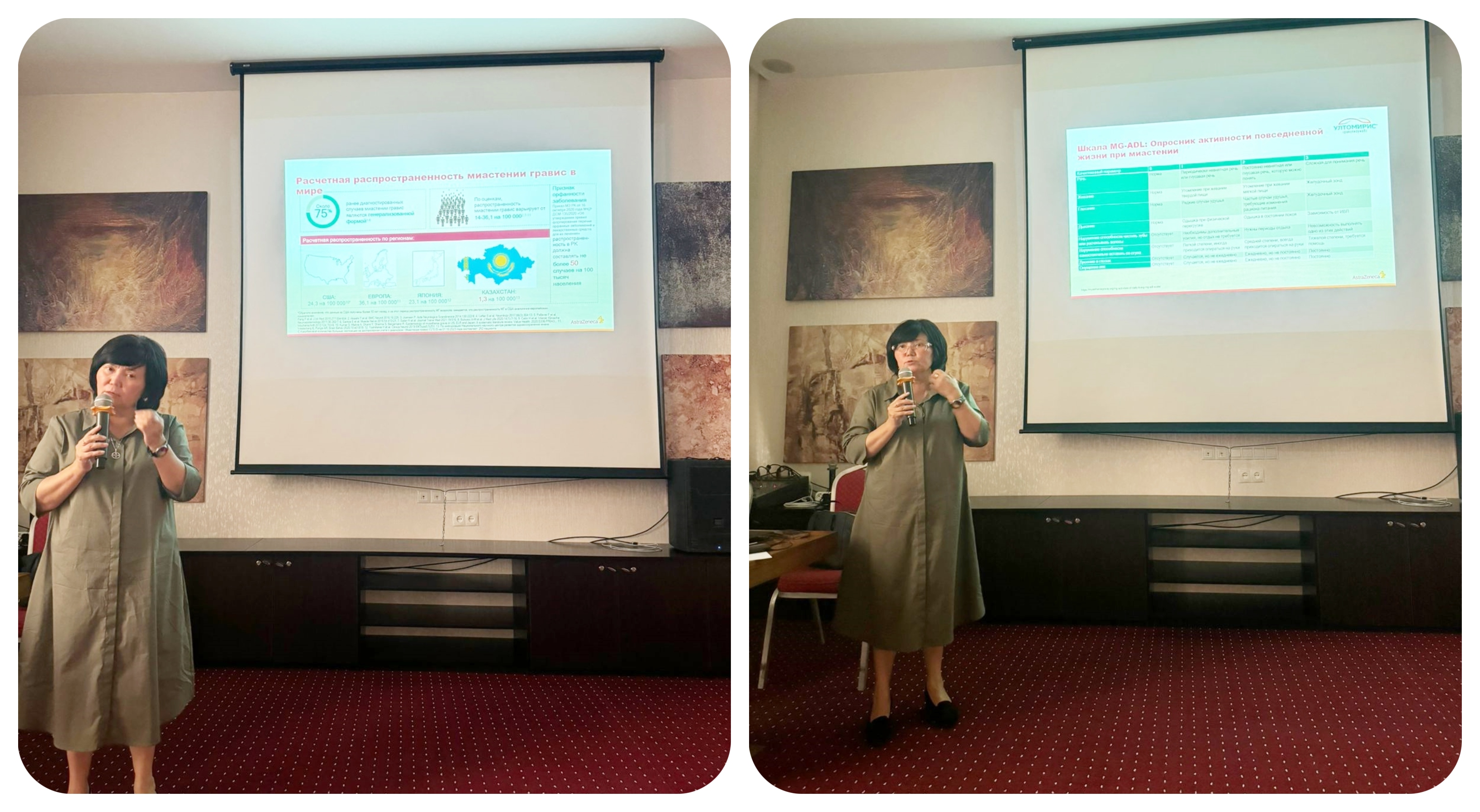Roundtable Discussion: “Generalized Myasthenia Gravis: How to Choose the Optimal Therapy for the Patient”

On June 16, 2025, a roundtable discussion was held, dedicated to a personalized approach to the treatment of generalized myasthenia gravis (GMG). The event brought together leading experts in neurology, as well as physicians from practical healthcare settings.
Generalized myasthenia gravis is a rare autoimmune disease characterized by impaired neuromuscular transmission and pronounced muscle weakness. With timely diagnosis and properly selected therapy, patients can achieve long-term remission and maintain a high quality of life. However, in practice, physicians often face challenges in making a diagnosis, assessing disease severity, and choosing effective and accessible therapy, especially in cases of treatment-resistant forms.
Key discussion points of the roundtable included modern clinical approaches to the treatment of GMG, the use of standard and targeted therapies, application of immunosuppressive treatment, intravenous immunoglobulin (IVIG), plasmapheresis (PP), and new biological therapies; criteria for choosing first- and second-line treatment options; approaches to managing refractory forms of the disease; personalized therapy based on a patient’s clinical profile; the impact of treatment on quality of life and social adaptation; and the importance of interdisciplinary collaboration in the treatment and follow-up process.
“Today’s meeting is an effort to bring together clinical experience, scientific data, and the real needs of patients. The question of selecting therapy goes far beyond clinical guidelines — we are talking about an approach that takes into account each patient’s individuality,” noted Professor N.A. Zharkynbekova, MD, PhD, Professor at the Department of Neurology, Psychiatry, Rehabilitation and Neurosurgery at SKMA JSC.
The roundtable also featured new data on the use of monoclonal antibodies in the treatment of myasthenia, explored the prospects for complement inhibitors, and discussed the challenges related to the accessibility of innovative therapies in Kazakhstan.
Participants paid special attention to the patient journey — from initial diagnosis to treatment decisions — and emphasized the need to raise awareness of GMG among general practitioners and neurologists.
“Often, patients spend years going from one specialist to another before receiving the correct diagnosis. This results in a significant loss of valuable time. Our task is to build a system where every patient can receive help as early as possible,” emphasized Professor Zharkynbekova.
The roundtable served as an important platform for sharing experience, developing unified approaches to managing GMG, and discussing strategies to improve access to modern therapies. Following the event, participants agreed to prepare a joint expert statement and initiate regular working meetings among specialists in rare neurological diseases.